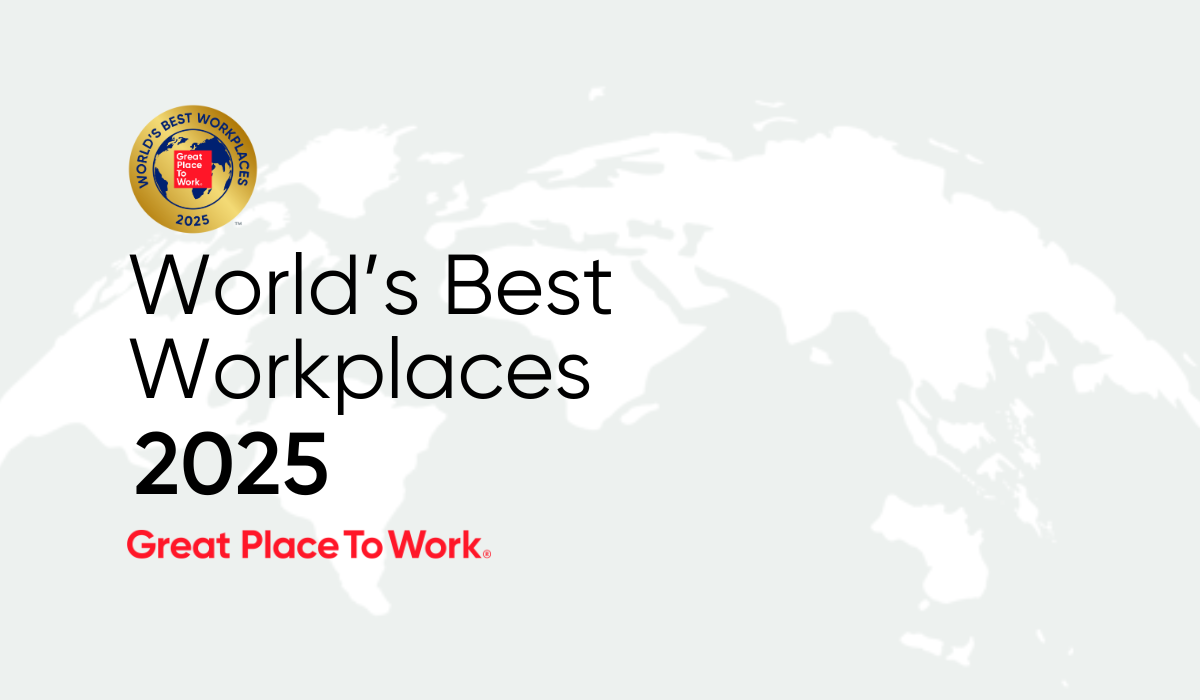Trust at work has proven itself crucial for business again and again. So, why do so many organisations get it so wrong?
The concept of trust — particularly in the workplace — is deceivingly simple.
It’s a measure of relationships, how one group (employees) feels valued and understood by another (management). The presence of trust indicates healthy workplace culture, as well as a host of benefits to the organisation, from resilience and innovation to stock market success.
Yet, it’s something that even the most well-meaning leaders can get wrong.
Great Place To Work® has been measuring high-trust work culture for 30 years and has defined the elements of trust for employees (credibility, respect, and fairness). Data has shown how diversity, equity, inclusion & belonging must be embraced to build trust across an organisation.
Over the years, our experts have learned a thing or two about the ways leaders often fail to foster trust at work. Here are some of the most common mistakes.
1. Assuming building workplace trust is HR's job.
Even the most hands-on leaders often fail to understand how central a role they play in building trust with employees. A CEO will make a speech about the importance of culture to the organisation — and then pass the baton to the HR team.
Julian Lute, senior strategic advisor with Great Place To Work, explains that leaders often fail to ask questions about how they influence company culture:
- How are we making decisions about the business?
- How are we communicating our decisions?
- How are we listening to feedback and incorporating it into future activities?
“It’s almost like culture lives on this island,” Lute says, when in fact culture has everything to do with the actions of leaders. “It’s really about how people experience their leadership.”
2. Thinking trust can be built quickly.
After a company surveys employees, it often expects to put things right immediately. However, trust is something that can only be built over time, through a continual process of delivering on promises again and again.
Lute says leaders are often frustrated when results don’t change by the next quarter or before the next pulse survey. His more realistic timetable for seeing meaningful movement is 18 to 24 months.
But that doesn’t mean you should wait to start building trust.
“Your opportunity to build trust always starts now,” says Sarah Lewis-Kulin, vice president of global recognition at Great Place To Work. “The decisions people make today are critical to the workplace they will have in a few years.”
3. Trying to buy employee trust.
Many leaders mistakenly think they can buy trust with expensive perks and benefit programs.
Employees often separate the parts of their work experience that feel transactional. If an employee is dissatisfied with their work culture, their colleagues, or their leadership team, a superb childcare benefit won’t tip the scales.
Employee programs and benefits are important, but they won’t make up for a lack of trust. They’re tools that leaders can implement, but they must coincide with complementary company values to create truly great employee experiences.
4. Equating employee trust with engagement or happiness.
When looking at data from the UK's Best Workplaces™ list that Great Place To Work produces each year, it’s tempting to interpret it simply as a measure of employee engagement, or even individual happiness.
That’s a mistake.
Lewis-Kulin argues engagement or job satisfaction alone are poor indicators of the overall employee experience. They might be part of the picture, but all workers go through phases of engagement and disengagement, to say nothing of emotional peaks and valleys.
What Great Place To Work measures is trust — and it’s trust that has a transformational business impact on retention, recruitment, and stock prices.
5. Thinking employees don’t have to trust you to get their job done.
Does it really matter how employees feel?
“People will say: ‘Do we pay them? Do they show up to work? Do they have a job?’ That’s the thing that should motivate employees to do what we need to do for our customers,” Lute says.
But employee trust shows up in their work. Employees who feel empowered by their organisation are more likely to innovate and go above and beyond for their organisation. In fact, employees at Best Workplaces are 32% more likely to agree that people in their organisation give extra to get the job done.
Employees also notice when care and concern shown for customers is never extended to them.
It’s not uncommon to hear employees say, “We will do anything for our customers — but when we as employees need any sort of support, it’s a fight,” Lute says.
The best companies know that employees deserve the same level of care and consideration. “It’s that same intimacy you would have with your customers,” Lute says.
6. Not prioritising all your employees
Without numbers, it’s easy to miss how some groups of employees feel left out at work. Frontline employees often have a worse experience than in-office workers and senior management — and the experience of culture can be deeply divided across an organisation.
If your work culture only exists in office activities, workers who don’t participate find it harder to think of themselves as part of the whole. That’s a problem because often frontline workers are also your brand ambassadors in the community. Employees performing services in the community are the most tangible expression of your brand for most customers.
Discover what your employees really think and start building a high-trust culture today.










